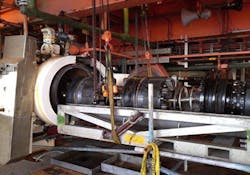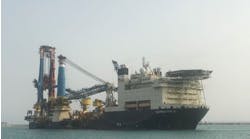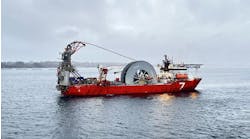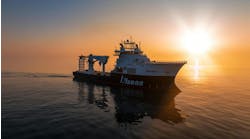Offshore staff
STAVANGER, Norway – TDW Offshore Services has completed two pipeline interventions offshore Australia using its SmartPlug pressure isolation technology.
The first intervention was carried out to protect a live gas infield flowline from falling objects. To limit the negative consequences that could flow from a dropped object, TDW isolated the operating facility from the surrounding impact zone. It was the first time the company used its SmartPlug system to mitigate the risk of damage to a pipeline during a construction operation.
TDW isolated the pressure in a 30-in. subsea flowline. First, a dual-module SmartPlug isolation tool was launched from the platform and pigged to the set location, and set. The pressure was then bled off from that point back to the platform. For the next six months, the SmartPlug tool remained in the line while construction activities took place. During this period, the company used its remotely-operated SmartTrack tracking and pressure-monitoring system to continuously monitor the location of the SmartPlug tool and pressure in the line.
“As a result of the intervention, it was only necessary to bleed down the affected section of the pipeline, which extends approximately 330 m [1,083 ft] from the platform, as opposed to the entire system,” said Rolf Gunnar Lie, regional business development manager – Asia Pacific for TDW. “It also meant that they were able to install the new structure, while taking precautionary steps to reduce the potential impact of a dropped object.”
The second pipeline intervention took place on a section of a 40-in. gas export pipeline (trunkline) that extends from an offshore platform to an onshore terminal. The intervention was required to complete a hydrotest on a 40-in. trunkline terminal refurbishment project involving multiple valve replacements.
After a beach valve and pig receiver valves were replaced, a hydrostatic strength test was required. To ensure that this test was safely executed, the affected line was isolated by TDW with the SmartPlug tool. The tool was then pigged from the receiver to the set location using water. After the hydrotest was completed, the plug was pigged efficiently back to the launcher using nitrogen within the scheduled timeframe.
“By using the SmartPlug tool, we were able to provide this valued customer with a fast, efficient isolation so that the hydrostatic strength test could be carried out safely,” said Lie. “In addition to the enhanced safety benefits, associated maintenance costs were reduced because the pipeline was isolated without reducing pipeline pressure or displacing pipeline inventory.”
2/27/2013



